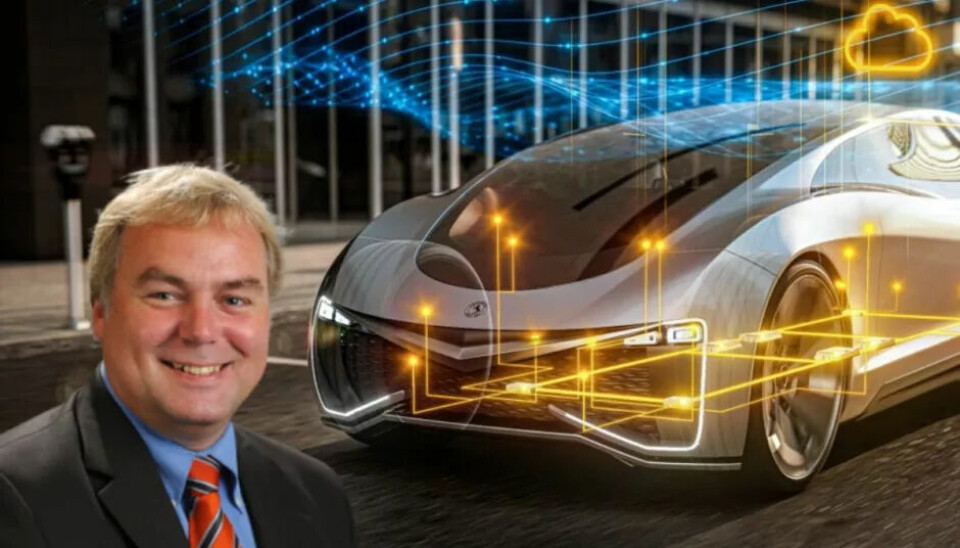Software Defined Vehicles
3 Questions for… Dr. Thomas Raste, Principal Expert in Vehicle Dynamics, Continental Automotive
“Modularity makes complexity manageable”

In the lead-up to the 6th International Conference on Automotive Software Strategies, we asked Dr. Thomas Raste, Principal Expert in Vehicle Dynamics at Continental, three questions. The event will take place on 21 and 22 May 2025 in Munich, Dr. Raste is one of the speakers.
With over two decades of experience in both industry and academia, Dr. Thomas Raste is one of the leading minds in automotive safety and motion control. As Principal Expert for Vehicle Dynamics at Continental Automotive, he is actively involved in the company-wide expert network and plays a key role in shaping the future of vehicle motion strategies.
Dr. Raste began his career at Continental in 1998, focusing on the development and application of control software for electronic brake systems. From 2003 to 2007, he held various engineering and project management roles in the Global Chassis Control division, which he has led since 2008. In 2009, he was appointed Principal Technical Expert for Vehicle Dynamics.
His project leadership includes major contributions to European R&D initiatives such as the EU FP7 project ID4EV, where he developed cooperative ABS control systems with energy recuperation. He also headed motion control efforts for an automated driving project in collaboration between BMW and Continental.
Dr. Raste is also a co-author of several textbooks on vehicle dynamics control and automation-based motion strategies, underlining his deep technical expertise and commitment to advancing safe, intelligent mobility systems.
ADT: How is the traditional role of motion control evolving in a software-defined architecture?
Dr. Raste: The concept of SDV is based on the idea of separating hardware and software, consolidating computing power into larger units and decoupling them from actuators. This is applicable to all electronically controlled vehicle functions, including motion control. Development in the motion domain up until now is characterised by several leaps in technology: Introduction of mechatronics with ABS/ESC, integration of ADAS and fuel economy, and functional integration of sensors. The design of the early motion control was interdependent, i.e. changes to one component were hardly possible without having an impact on many other components. Motion control has evolved towards an increased modularity with highly standardised modules like operating systems, middleware and interfaces. Those modules lay the foundation for fast development and integration cycles of non-standardised “solution” modules meeting the carmaker’s differentiation needs. Our approach at Continental envisages a central chassis service as the key building block on the way to SDV, which is addressed by our Holistic Motion Control (HMC) software. As a comprehensive solution for all vehicle movements, HMC is a full-stack software with a large number of modular software components for active driving safety that are completely hardware-independent. Therefore, it can not only be used across various E/E vehicle architecture types, but also be upgraded throughout the complete vehicle lifetime. At Continental, we offer HMC as a “Software-as-a-Product” solution. The combination of HMC with the Electronic Control Units (ECUs) of the Safety & Motion Integration Platform (S&A IP) can even serve as an entire system solution.
What added value can suppliers like Continental offer OEMs navigating SDV transitions?
Modularity makes complexity manageable and enables independent, parallel work, speeding up time to market. The value of a system of modules adds up the value inherent in each module and is higher than the value of a monolithic system. Modularity creates value but is not free. System integration and testing dominate the costs. Continental offers the complete end-to-end spectrum of engineering and manufacturing services to mitigate the costs. On the one hand, SDV solutions potentially reduce E/E architecture complexity - for example, by grouping various functions into larger control units - and increase safety while saving costs long-term. On the other hand, such technology opens up entirely new possibilities for spatial vehicle design. Reduced complexity and better performance can be achieved using smart actuators and sensors. The smart components solve problems internally, like production tolerances and fault detection. Also, safety by redundancy in each component is not cost-effective. To balance costs and significantly increase vehicle safety, only a centralized control can fully utilize cross-redundancy among actuators to obtain high fault tolerance. For example, a yaw torque to steer the vehicle can be delivered per wheel using individual brakes or motors if the steering actuator fails. Our HMC provides access for pretty much all use cases by its centralized integrated multi-actuator control approach.
How do shifting control paradigms from hardware-centric to software-centric systems impact safety-critical motion functions?
Safety-critical motion functions ensure the stability of the wheel and chassis motion by avoiding excessive longitudinal and lateral slip values and keeping the vehicle within its stability envelope. During emergency braking, the motion software pursues a so-called “powertrain first” strategy, meaning that motion functions control the longitudinal slip by commanding target wheel speeds which are then precisely tracked by electric drive motors. Only when the motor limits are reached or the braking balance is compromised, do the motion functions command the friction brakes to take over. Smart actuators communicate their capabilities, and smart algorithms allow the online estimation of friction and lateral slips. The motion control is always precisely informed about the safety margin, i.e., how far the vehicle is from the stability limits. By reacting with proper (always bounded) control actions, the vehicle motion remains within a safe area. In other words, driving at the limits is easier and safer than ever before. However, responsibility for driving behaviour and road safety remains with the driver. Furthermore, new exciting user experiences are possible by coordinated control inputs coming from dynamic feedforward control based on user-selectable target dynamics. A typical desired behaviour is the adaptation of response to driver steering inputs varying with vehicle velocity. At zero velocity, motion control can rotate the vehicle around the vertical axis. This so-called “tank turn” feature uses in-wheel electric motors.

